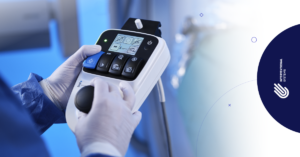
Micromate™ Case Report: Robotic-Assisted Osteoid Osteoma Cryoablation
See how Micromate™ helped the clinical team at St. Antonius Hospital, in the Netherlands, successfully perform a cryoablation of an osteoid osteoma.

See how Micromate™ helped the clinical team at St. Antonius Hospital, in the Netherlands, successfully perform a cryoablation of an osteoid osteoma.

Prophecies foreshadowing how robots will replace humans are as old as robots themselves. Could this be what the future holds for medical robots, too? From what we’ve been witnessing, the answer is no.

Interventional Systems finished the implementation of the IraSME project “E-GantryMate: Compact MRI compatible device for MRI guided percutaneous needle interventions”.

See how Micromate™ helped the clinical team at Ordensklinikum Linz Barmherzige Schwestern, Austria, perform a Bone Biopsy.

When there’s a widespread shortage of CT contrast, every conservation strategy is welcome. Learn how iFIX patient positioning system can help.

Interventional Systems is proud to announce the signature of a strategic collaboration agreement with the Johns Hopkins University’s Whiting School of Engineering for the development of novel solutions to enhance the accuracy of robotic-assisted percutaneous procedures.

Interventional Systems announced the newest addition to Micromate™’s product suite: a planning and navigation station that will make the needle-based intervention miniature robot available for use with CT scanners.

See how Micromate™ helped the clinical team at Tirol Kliniken, Austria, perform a percutaneous Type II Endoleak Embolization.

It’s time to wrap up 2021 and have a close look into what’s coming up for 2022!

The miniature medical intervention robot will bring ease of use and high accuracy to the Chinese operating rooms in a partnership with the innovative Chinese

Read here our input on the most recent guidelines for interventional oncology, and how Micromate™ brings value to this subspecialty.

Learn why building Micromate™ with a user-friendly approach in mind turned it into the most seamless robot to join the Operating Room.